Buying secondhand or not buying at all will forever be the most sustainable options. But there comes a time in even the most ardent thrift shoppers life when we crave the smell of something new—a vibrant dress that hasn’t been dulled down by the washing machine, a trendy cashmere sweater that has never seen the inside of your grandma’s wardrobe or a snug hoodie that you didn’t have to steal off your boyfriend’s back (that is still thrifting isn’t it?). When it comes to elevated, conscious living, there’s no one way about it. And we believe the answer lies in seeking out that elusive sweet spot between an uncompromising style and steadfast sustainability.
Yes, we can avoid fast fashion like the plague and only invest in fewer, better things. And whilst a movement towards slow fashion is a step in the right direction, many luxury brands still use exorbitant amounts of water to make a single tee and jeans (we’re talking around 20,000 liters). So how do we avoid greenwashing and authentically live out an elevated, conscious lifestyle? We can turn to pieces that are not only designed to outlast transitional trends in style and quality but are also manufactured using sustainable fabrics for clothing.
By seeking sustainable fabrics in timeless pieces, we maintain our individual sense of style with capsule wardrobes that effortlessly mix and match from one day to the next. But we also cultivate a sartorial culture that cares about its impact on the environment through sustainable fashion.
The source of the fiber: Natural vs synthetic fabrics
When we talk about natural or synthetic fibers, we are talking about the source of the fiber. Whilst synthetic fabrics are man-made and produced partially or entirely from chemicals, natural fabrics come from animal or plant-based fibers. But whether a fabric is natural or synthetic is more than just an al natural label. And in different ways, they both have a positive and negative impact on the environment.
Contrary to popular belief, natural fabrics are not intrinsically sustainable as greenwashing tactics would have you believe. In fact, the cotton industry is one of the most harmful agricultural activities around. And the leather and wool industries largely contribute to animal cruelty. However natural fibers are a lot easier to make sustainable with the right practices. And cutting-edge closed-loop technologies have pioneered new ways to produce natural fabrics organically without excess water-waste and harmful chemicals. Natural fibers are usually inherently biodegradable and renewable. And when they are sustainably sourced and treated with natural dyes, they can be transformed into exquisitely eco-friendly clothing materials.
On the other hand, synthetic fibers use a huge amount of chemicals to make. These harmful chemicals are emitted into the environment during manufacturing, and every time a garment is machine washed. Like natural fibers, synthetic fibers use a lot of water in production—unless they are made using new sustainable technologies. But unlike natural fibers, they aren’t biodegradable, although this isn’t all bad. Because the fibers don’t break down easily, many synthetic materials can be recycled over and over again—in which case, they may even be considered renewable. As you can see, the sustainability of a fabric depends on a lot more than whether it’s natural or synthetic. It depends on how the fabric is sourced, manufactured, and processed later on.
Types of sustainable fabrics
Plant-based fibers
Plant-based fibers are sourced from—yep, you guessed it—plants. And whilst not all plant-based fibers are necessarily environmentally friendly, when sourced and processed sustainably, they can have the lowest environmental impact of any materials out there. They usually derive from fast-growing plants such as bamboo, flax plants, and hemp, which need very little water to grow and naturally absorb a lot of carbon from the air whilst doing so. And in some cases, these fast-growing plants could even have a carbon-negative impact on the environment. Common examples of sustainable plant-based fibers include organic cotton and organic linen. Whilst less common examples include “pineapple leather” and hemp.
Recycled fibers
Recycled fabric will forever remain one of the most sustainable materials. Not only does it divert deadstock and worn-out apparel from landfills, but it also creates new clothing without relying on new resources. Although synthetic fibers are criticized for their non-biodegradable properties, this actually lends to infinite recycling. Recycled Polyester and Econyl (recycled nylon) are both excellent examples of repurposed fabrics. Whilst reclaimed fabric simply prevents scraps, “not up to scratch” fabrics, and excess orders from being burnt or discarded.
Animal-derived fibers
Whether you believe that animal-derived fibers could ever be considered sustainable or not, there are certainly some that are more sustainable than others. And if you’re going to include animal-products in your lifestyle, there are more ethical ways to do so. For example, leather as a byproduct of the meat industry is a lot better than when it isn’t a byproduct. And cashmere harvested with hand combing techniques is a lot better than cashmere harvested with electric shearers. But the sustainability of animal-derived fibers doesn’t only depend on the treatment of animals but also on how the fibers are subsequently processed.
Synthetic fibers
Synthetic fibers are man-made fibers. And whilst many traditional synthetic fabrics use harmful chemicals, there are sustainable ways to use them. Recycled synthetics such as recycled polyester and econyl repurpose non-biodegradable fibers such as polyester and nylon, in what could be an endless cycle of reimagination and minimal waste. Whilst sem-synthetic fibers such as Modal and Ecovero combine renewable natural fibers from wood pulps with more sustainable synthetic processes to create eco-friendly clothing materials.
Sustainable materials and fabrics glossary
Discover below the best sustainable materials and fabrics, in alphabetical order:
- Bamboo linen
- Cashmere
- Econyl
- Ecovero Viscose
- Lyocell
- Modal
- Organic cotton
- Organic hemp
- Organic linen
- Pineapple Fiber
- Reclaimed fabric
- Recycled Polyester
- Responsible Leather
- Silk
- Wool
Bamboo linen
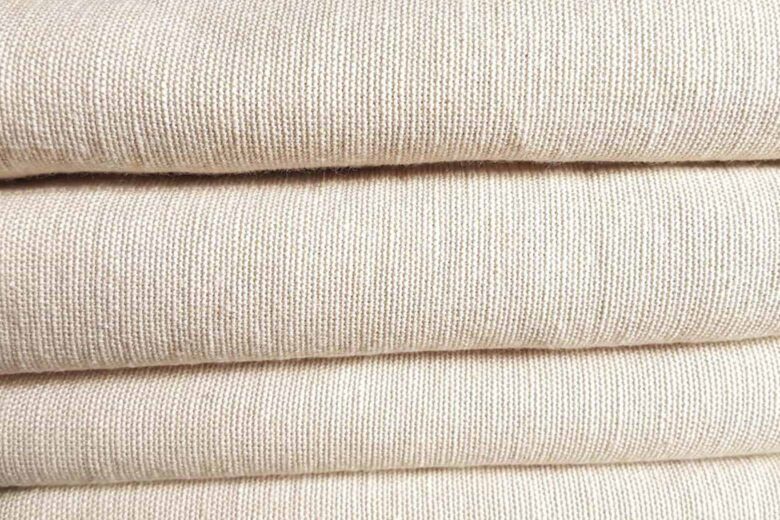
TLDR: Marrying bamboo’s natural renewability with linen’s sustainable manufacturing process.
Unfortunately, Bamboo fabrics are a big target when it comes to greenwashing. Thanks to global knowledge of the plant’s sustainable potential, many manufacturers use bamboo as a marketing ploy rather than an authentic environmental alternative. And a lot of them get away with passing off intensively chemically processed “bamboo rayon” as environmentally-friendly. Despite its frequent misuse, we shouldn’t overlook bamboo fabrics altogether, but we do need to be more vigilant about where they come from.
Bamboo is famed amongst eco-warriors for good reason. It can be harvested without killing the plant itself. It grows incredibly quickly, renewing itself at a rapid rate whilst consuming more carbon dioxide than many trees. And it can rely on rainfall alone. That’s Mother Nature working her magic for you.
But the big difference between bamboo-frauds and sustainable bamboo use lies in the fabric’s manufacturing process—in which case bamboo linen is a win all round. Just like your traditional linen, bamboo linen is produced mechanically without any chemicals. And by combining linen’s manufacturing process with bamboo’s intrinsic renewability, bamboo linen is one of our best sustainable fabrics for luxury apparel and high-quality pieces.
Feels like: Finding your Bali zen in soft, breathable fabrics.
| Fabric name: | Bamboo Linen |
| Certifications & Standards: | Forest Stewardship Council, USDA-Certified Organic, Global Organic Textile Standard (GOTS), Organic Content Standard (OCS), Fair Trade, Oeko-Tex 100, and Bluesign |
| Source: | Natural |
| Vegan: | Yes |
| Biodegradable: | Yes |
| Renewable: | Yes |
Cashmere
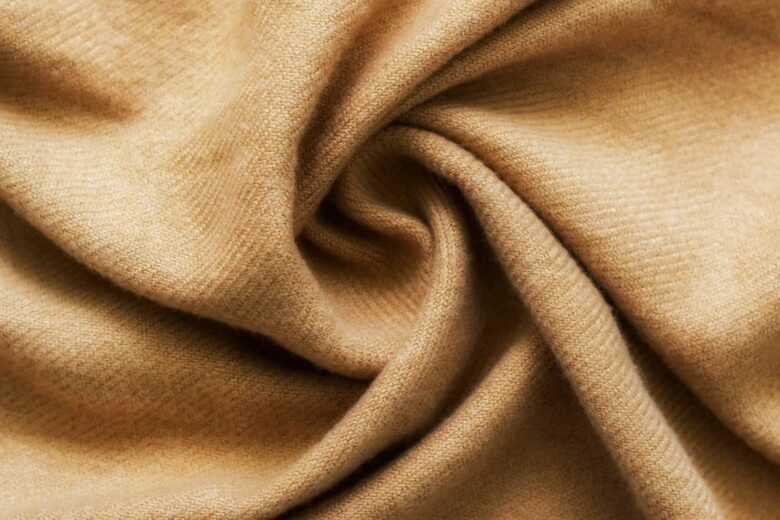
TLDR: When treated with care, Mongolian goats produce the softest sustainable fabric there is.
Cashmere is sourced from mountain goats raised in Asian alpine areas like Mongolia. Like wool, cashmere has been associated with a lot of ethical and environmental problems. And whilst it can be sourced sustainably, it not always is. Therefore in order to consider cashmere an ethical, sustainable fabric, it is important to vet the working conditions of goat herders, the ecological complications of the goat farm itself, as well as hair combing techniques that are used.
Eco brands such as Naked Cashmere only harvest the fibers in Spring when the goats naturally start to shed their fur. They use hand combing techniques to preserve the natural fibers and to prevent cutting or scaring the animal as some electric shears do. On top of these sustainable efforts, cashmere is naturally a renewable resource, biodegradable, and exquisitely soft—but we don’t need to tell you that.
Feels like: The G.O.A.T in cozy comforts.
| Fabric name: | Cashmere |
| Certifications & Standards: | Recycled Claim Standard (RCS); The Global Recycled Standard (GRS), Re.VerSo, Good Cashmere Standard ® (GCS), Sustainable Fibre Alliance (SFA) Cashmere Standard, Kering Standard on Cashmere, Global Organic Textile Standard (GOTS), Fair Trade, Responsible Wool Standard (RWS), Certified Organic Wool, Certified Animal Welfare Approved, Certified Humane® Label, Oeko-Tex 100, and Climate Beneficial by Fibershed |
| Source: | Natural |
| Vegan: | No |
| Biodegradable: | Yes |
| Renewable: | Yes |
Econyl
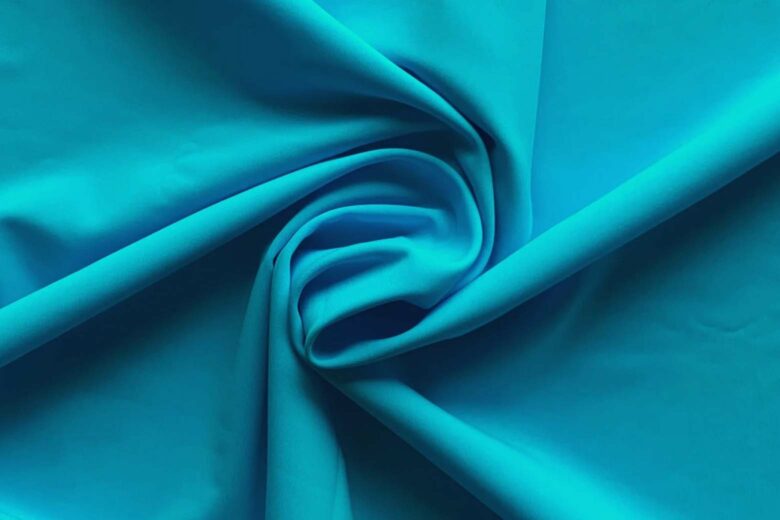
TLDR: A never-ending cycle of recycled eco-nylon.
As far as synthetic fibers go, Econyl is one of the most sustainable fibers and textiles out there. Pioneered by Italian manufacturer, Aquafil, the innovative fabric is made entirely from recycled nylon. As a non-natural material, nylon isn’t biodegradable. But because it doesn’t break down easily, it is infinitely recyclable—a characteristic perfectly harnessed by this eco-conscious manufacturing company.
By regenerating nylon in a closed-loop system, brands can recreate and remold the same fabrics over and over again without using new resources or much water. However, as a synthetic fiber, Econyl will still shed microfibers when machine-washed. And therefore it is best used on clothing such as shoes, activewear, and swimwear that are frequently hand-washed.
Feels like: Stretching the limit when it comes to flexible fabrics but rigid sustainability.
| Fabric name: | Econyl |
| Certifications & Standards: | Global Recycle Standard, Recycled Content Standard (RCS), and Oeko-Tex 100 |
| Source: | Synthetic |
| Vegan: | Yes |
| Biodegradable: | No |
| Renewable: | Yes |
Ecovero Viscose
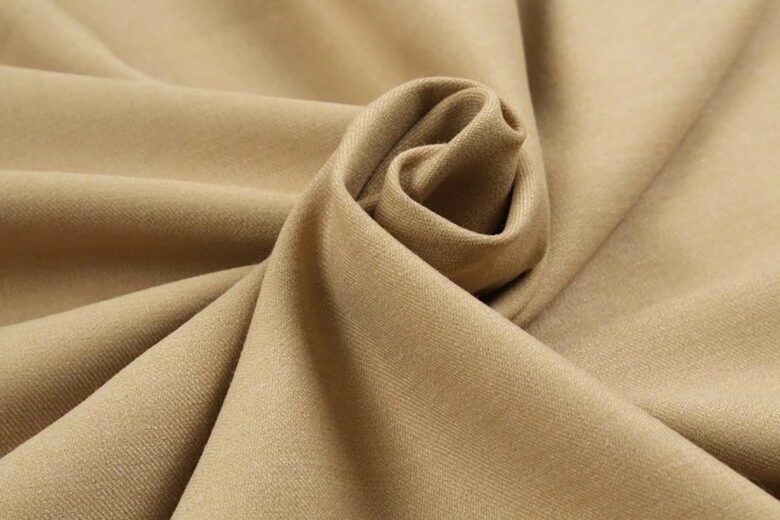
TLDR: Traditional wood pulp resources—but make it sustainable through eco chic processes.
It’s true: Viscose doesn’t have the best reputation when it comes to sustainability. And for good reason. An enormous amount of water and harmful chemicals are typically used to produce artificial silk. However, there are more sustainable options.
Lyocell and Modal are the most common examples of sustainable Viscose. And produced by the same reputable manufacturer—Lenzing—Ecovero is yet another fantastic alternative. Manufactured in the same closed-loop system as their other eco-chic materials, Ecovero uses half the amount of water and chemicals to be produced than traditional Viscose. Derived from a variety of sustainably sourced wood pulps, it is fully biodegradable. And it meets the renowned manufacturer’s highest environmental standards. In fact, if you see Lenzing associated with a brand, it is likely to tick all your sustainable boxes.
Feels like: Going with the flow and embracing Spring florals.
| Fabric name: | Ecovero Viscose |
| Certifications & Standards: | Global Recycle Standard, Recycled Content Standard (RCS), and Oeko-Tex 100, FSC Certified and PEFC Certified |
| Source: | Semi-Synthetic |
| Vegan: | Yes |
| Biodegradable: | Yes |
| Renewable: | Yes |
Lyocell
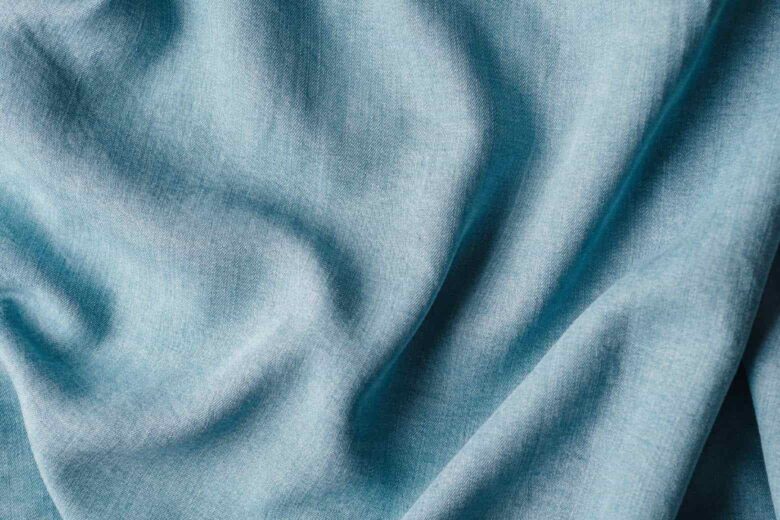
TLDR: Ancient resources reimagined through cutting-edge technologies.
Not only do eucalyptus trees produce some of the best naturally-healing essential oils, but they’re also essential for the environment. And just like their antiseptic properties protect our bodies, their sustainable properties protect our planet.
Eucalyptus trees grow organically without the help of pesticides, fertilizers, or much water. They can be harvested within three to five years, making them a rapidly renewable resource. And they absorb a large amount of carbon dioxide from the atmosphere during the process.
Lyocell is also referred to as Tencel lyocell—the trademark name given to it by the world’s most reputable Lyocell manufacturer, Lenzing. This fabric harnesses the intrinsic sustainability of eucalyptus trees and uses their pulp to produce a type of Rayon that is a lot more environmentally friendly. Lyocell is manufactured in a closed-loop system that recycles most of the chemicals used. It is also fully biodegradable and can be used to create everything—from rugged denims to delicate intimates.
Feels like: Yielding to relatively firm fabrics, whilst keeping it casual in distressed denims.
| Fabric name: | Lyocell |
| Certifications & Standards: | Oeko-Tex 100, Forest Stewardship Council |
| Source: | Natural |
| Vegan: | Yes |
| Biodegradable: | Yes |
| Renewable: | Yes |
Modal
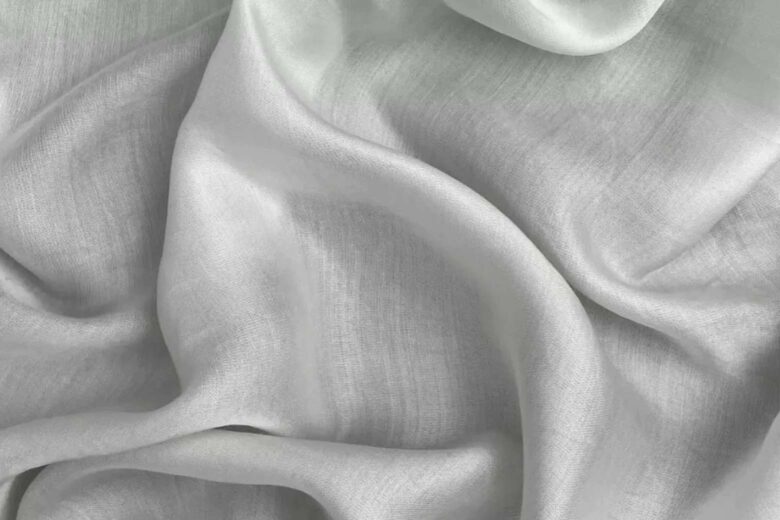
TLDR: A breath of fresh beech tree air manufactured in a closed-loop system.
Made from beech tree pulp, Modal fabric is a semi-synthetic fabric renowned for its comfort and breathability. We say semi-synthetic because although it comes from a natural source, it still requires processing to be turned into a fiber. Fortunately, in the case of Modal, that process is a lot more sustainable than other types of Rayon.
Like Lyocell, most Modal comes from eco-chic Australian manufacturer, Lenzing. Lenzing Modal only uses trees from sustainably harvested forests. It is manufactured under the same closed-loop system that recycles most of the chemicals and water used. And it is bleached using eco-friendly techniques, keeping it biodegradable. Lenzing Modal is also carbon-neutral, making it difficult to compete with when it comes to sustainable materials.
Feels like: The softest second skin.
| Fabric name: | Modal |
| Certifications & Standards: | Oeko-Tex 100, Forest Stewardship Council |
| Source: | Semi-Synthetic |
| Vegan: | Yes |
| Biodegradable: | Yes |
| Renewable: | Yes |
Organic cotton
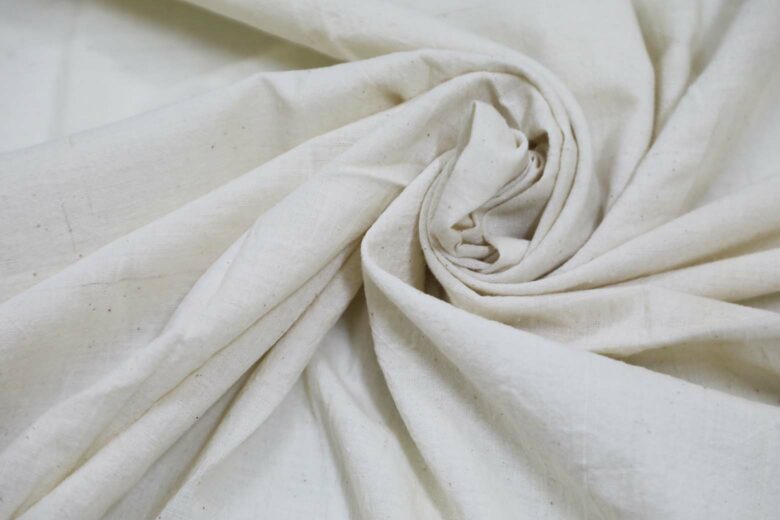
TLDR: Conventional methods get a sustainable, water-saving, pesticide-free makeover.
Cotton is commonly applauded for its “natural” properties. But as we’ve already established, al natural doesn’t necessarily mean organic, and it certainly doesn’t mean sustainable. Whilst used for centuries in luxury apparel, cotton is actually one of the main culprits of exorbitant water usage in the fashion industry. Cotton crops typically guzzle water, are prone to pesticides, and are processed using destructive chemicals.
Enter: organic cotton. The soft fabric has the same hyper-comfortable properties as conventional cotton, but without the consequential calamitous impact on the environment. Naturally, organic cotton is grown without pesticides or synthetic fertilizers. It also used 62% less energy and 88% less water than traditional farming methods. And it is processed without chemicals.
With sustainable fashion on the rise, organic cotton is becoming increasingly popular amongst our favorite luxury brands. So you really shouldn’t have a problem finding an equally-comfortable but environmentally-aware white tee the next time you shop.
Feels like: A white Summer.
| Fabric name: | Organic cotton |
| Certifications & Standards: | USDA-Certified Organic, GOTS Certification, Organic Content Standard (OCS), BCI Standard, Fair Trade, Bluesign, and Oeko-Tex 100 |
| Source: | Natural |
| Vegan: | Yes |
| Biodegradable: | Yes |
| Renewable: | Yes |
Organic hemp
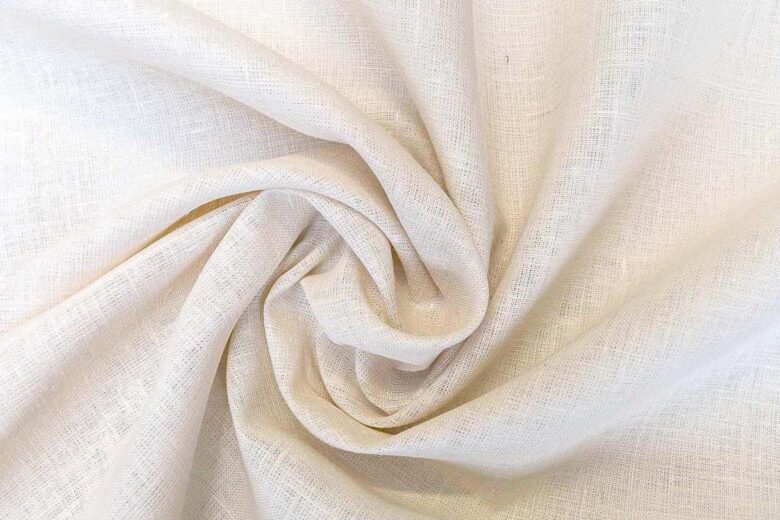
TLDR: Not only is organic hemp durable and biodegradable, but it also grows like a weed (with minimal help).
Organic hemp comes from—yep, you guessed it—the hemp plant (and no, you can’t get high just wearing it). Hemp plants grow rapidly with very little assistance. It uses considerably less water and energy than other plants. And like linen, it doesn’t need much pesticide or fertilizer—but still, we prefer it completely organic.
As one of the best examples of sustainable fabrics, hemp grows at an incredibly rapid rate, making it a carbon-negative raw material. This means that it actually absorbs more carbon dioxide through rapid growth than it releases during manufacturing. The renewable resource also naturally replenishes the soil as it flourishes. And as a result, it can be planted in the same spot for many years without exhausting the ground.
Like linen, hemp is naturally sun protective, thermoregulating, antimicrobial, and effortlessly chic. And although it’s slightly more expensive than other sustainable fabrics, we think hemp apparel is well worth the price tag.
Feels like: Getting high on linen-like luxury.
| Fabric name: | Organic hemp |
| Certifications & Standards: | USDA-Certified Organic, Global Organic Textile Standard (GOTS), Organic Content Standard (OCS), Oeko-Tex 100, and Bluesign |
| Source: | Natural |
| Vegan: | Yes |
| Biodegradable: | Yes |
| Renewable: | Yes |
Organic linen
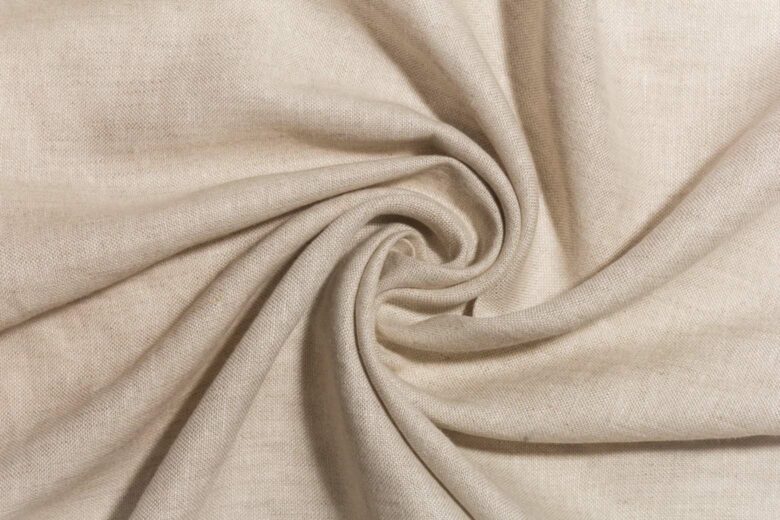
TLDR: Deriving from low-maintenance flax plants, organic linen has been cool, classy and conscious since 8,000BC.
Ancient Egyptians may have discovered the fabric for its cooling properties, but (perhaps) unknowingly they were also setting trends in sustainability. Rich in romantic heritage, Linen derives from the earth-friendly flax plant, making it fully biodegradable (when untreated), naturally sustainable—and of course, timelessly luxurious.
Flax plants use very little water and energy to grow compared to cotton or polyester. And even when it’s not organic, they require few pesticides, insecticides, and fertilizers—but we still opt for organic linen where we can.
As one of the most low-maintenance plants, Flax plants are able to grow in poor soil and can even rehabilitate polluted soil that couldn’t be used for much else. Every part of the plant is used in manufacturing, resulting in minimal waste. The fast-growing renewable resource has a high carbon absorption rate, reducing linen’s featherlight footprint even further. Plus linen is light, airy, and effortlessly breathable, making it our quintessential sustainable Summer go-to.
Feels like: Vacationing in the Mediterranean.
| Fabric name: | Organic linen |
| Certifications & Standards: | USDA-Certified Organic, Global Organic Textile Standard (GOTS), Organic Content Standard (OCS), Oeko-Tex 100, and Bluesign |
| Source: | Natural |
| Vegan: | Yes |
| Biodegradable: | Yes |
| Renewable: | Yes |
Pinatex
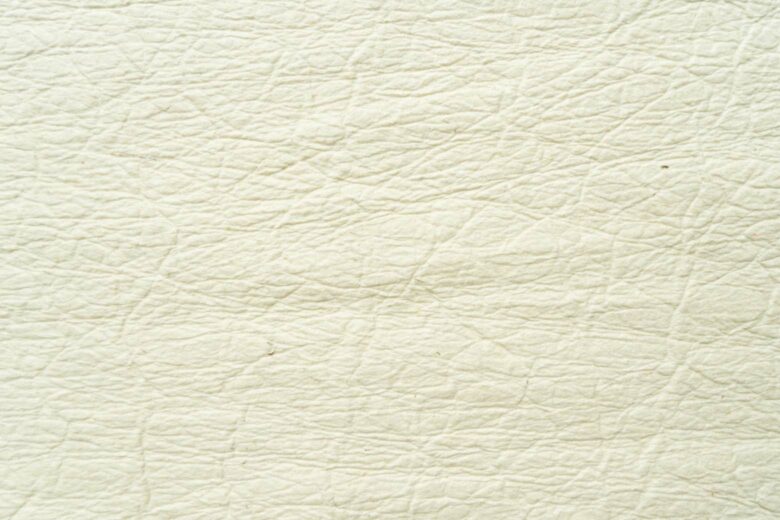
TLDR: Sweet and sustainable, pineapple leather is a beautifully biodegradable, plant-based byproduct.
Pioneered by London-based brand Ananas Anam, Pinatex is one of the most innovative new sustainable fabrics. Also referred to as “pineapple leather”, the sweet plant-based leather is a fabulous alternative for vegans and non-vegans alike. The durable fabric is made using scrap pineapple leaves that are otherwise burned. And as a byproduct of pineapple farming, no extra resources are needed to produce it.
As one of the most sustainable materials, Pinatex is fully biodegradable, even when combined with wood-based PLA. However some brands tan it with non-biodegradable dyes, so look out for vegetable-dyed Pinatex products. Ananas Anam also supports ethical rural farming communities in the Philippines, making the fabric both socially and sustainably fantastic.
Feels like: Soft leather—but make it vegan.
| Fabric name: | Pinatex |
| Certifications & Standards: | Oeko-Tex 100 |
| Source: | Natural |
| Vegan: | Yes |
| Biodegradable: | Yes |
| Renewable: | Yes |
Reclaimed fabric
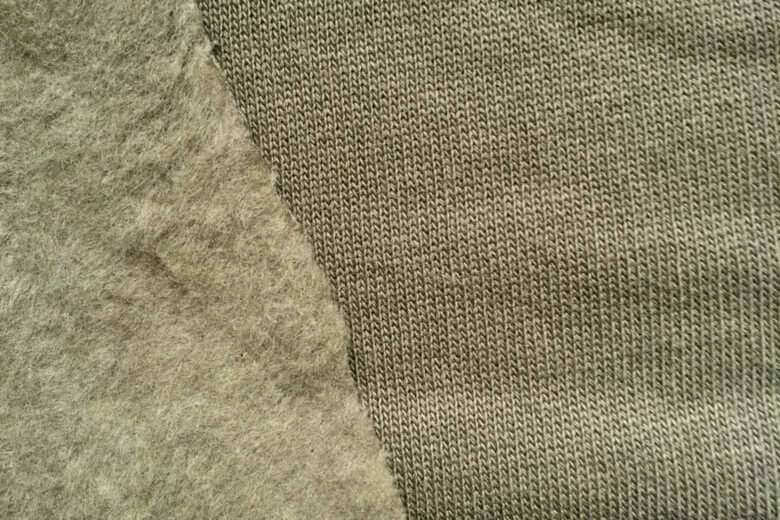
TLDR: Reclaimed fabric diverts scraps and excess from landfills and turns them into something beautiful.
Give a scrap about waste and turn your deadstock into something beautiful. It’s no secret that fashion has a waste problem—starting with over-ordering materials at the very beginning of the production line. These excess materials are often referred to as deadstock and are usually sent to landfills or burnt. Yep, we’ve all seen the stories of affluent labels taking heat for burning millions of dollars worth of unsold inventory.
Of course, we would love to see the root of this tackled. But in the meantime, we’re grateful for the ethical brands that divert waste from landfills and order reclaimed fabric instead of new fabrics. And whilst reclaimed fabrics aren’t inherently sustainable, they do give new life to materials that would otherwise be discarded for not meeting quality standards or due to overordering.
Feels like: Whatever the latest affluent label over-ordered.
| Fabric name: | Reclaimed fabric |
| Certifications & Standards: | RCS and GRS |
| Source: | Natural or synthetic |
| Vegan: | Sometimes |
| Biodegradable: | Sometimes |
| Renewable: | Sometimes |
Recycled polyester
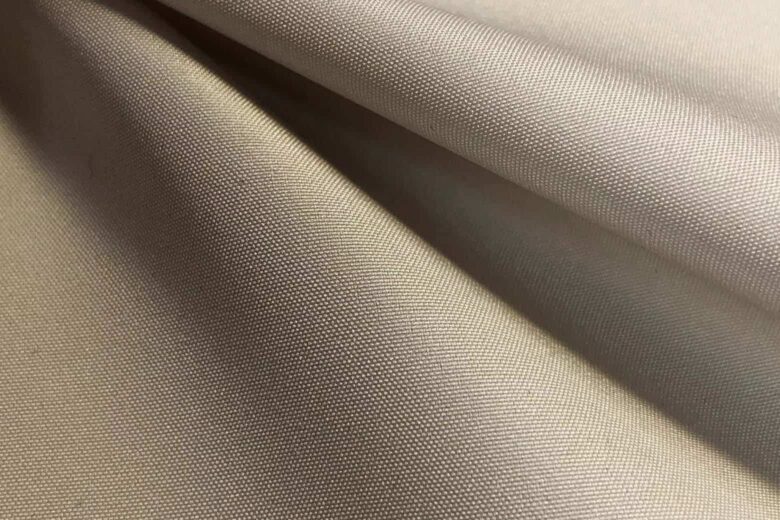
TLDR: From recycled bottles to sartorial cult-classics.
Unless you’ve been hiding under a rock, you’re likely aware of single-use plastic wreaking havoc on our planet. Perhaps you’ve even signed a couple of “save the turtle” Facebook petitions or signed up for a few Saturday morning beach clean-ups. And whilst all of these are worthy (and necessary) causes, where the bottles actually end up is the next big question. Personally, we prefer our recycled bottles in the form of ethical activewear and eco-chic collared shirts.
Recycled polyester (rPET) is made from landfill-bound bags. Yes, the eco-chic fabric isn’t sustainably flawless: PET can only be recycled so many times, and there is some release of microplastics when washed. However, it is undeniable that they are much better on our bodies than in the ocean. Of course, the best scenario would be the eradication of single-use plastics altogether. In which case, we can all play our part by investing in reusable water bottles—a small but important step. But until then, we appreciate brands such as Patagonia and Dagne Dover that are pioneering new ways to do that.
Feels like: Featherlight resilience.
| Fabric name: | Recycled Polyester |
| Certifications & Standards: | Global Recycle Standard, Recycled Content Standard (RCS), and Oeko-Tex 100 |
| Source: | Synthetic |
| Vegan: | Yes |
| Biodegradable: | No |
| Renewable: | No |
Responsible leather
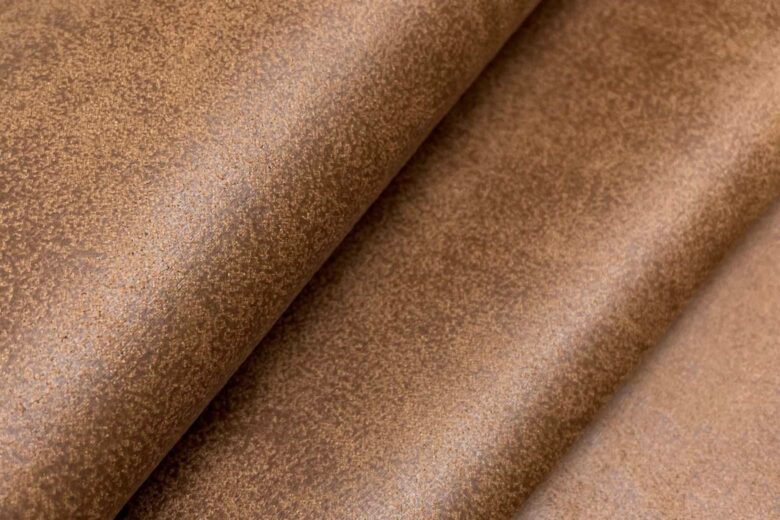
TLDR: Non-vegan but still responsible, sustainable leather is a byproduct of the meat industry and vegetable dyed.
All genuine leather derives from animal hides. Most high-end luxury brands use calf or veal leather for their soft and supple skin. And we typically categorize leather according to which animal it comes from and its grain (its texture). Therefore, whether animal-product fiber could ever be considered an ethically sustainable fabric usually comes down to personal beliefs. We fully understand the sentiment of our vegan friends and would never try to sway you otherwise. But if you do use leather products, we urge you to consider more responsible brands.
It goes without saying that no animal should be killed for the sake of a new handbag or pair of shoes. And leather that derives from a byproduct of the meat industry is the only leather that could ever be considered ethical. Of course, vegans would argue that the meat industry shouldn’t exist, but whilst it does, we’d rather see the whole animal used than parts of it.
Besides the non-vegan dilemma, the traditional process of tanning leather requires around 250 chemicals like arsenic and cyanide. Not only is this incredibly harmful to the environment but also to the workers. Chrome-free tanning is better than traditional methods. But vegetable tanning is the least harmful and most biodegradable. The bottom line: if you’re not vegan but still want to promote sustainability in fashion, look for byproduct leather that is vegetable dyed.
Feels like: Going against the grain—responsibly.
| Fabric name: | Responsible leather |
| Certifications & Standards: | Ecolife™ by Green Hides, Oeko-Tex 100, and Bluesign, and the Leather Working Group |
| Source: | Natural |
| Vegan: | No |
| Biodegradable: | No |
| Renewable: | No |
Silk
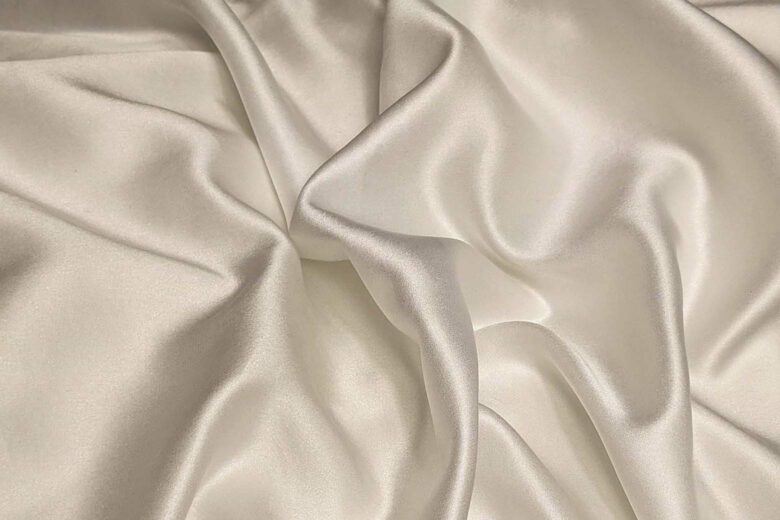
TLDR: Metamorphosizing silk through a peaceful, natural process.
Smooth enough to be used as an adjective, silk is one of the most luxurious fabrics in fashion. But is it sustainable?
If you’ve been holding your breath at the thought of giving up this sensual fabric, you can let it out. Silk is completely compostable and renewable, making it one of the most naturally sustainable fabrics out there. But like any highly sought-after material, the industry faces many concerns relating to production and slave labor. So it is important to review every brand individually.
In theory, silkworms shouldn’t be harmed in the process. But this isn’t always the case. Peace Silk or Ahimsa Silk is manufactured using a nonviolent production process. The silkworms are bred under natural conditions without fungicides, sprays, or insecticides. And once they emerge on their own, they’re able to continue their life as a moth.
Feels like: The adjective.
| Fabric name: | Silk |
| Certifications & Standards: | Global Organic Textile Standard (GOTS), OTEX-Certified Organic Silk and World Fair Trade Organization Certified |
| Source: | Natural |
| Vegan: | No |
| Biodegradable: | Yes |
| Renewable: | Yes |
Wool
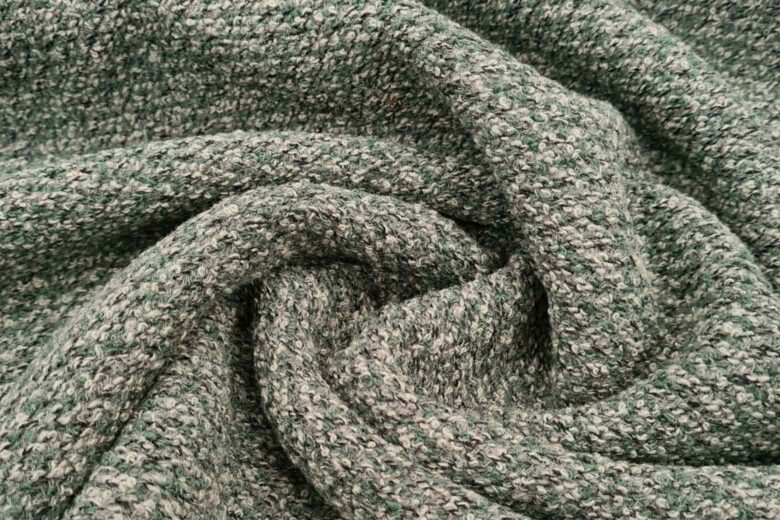
TLDR: Wool can be an incredibly durable renewable natural fiber. But don’t just follow the flock—vet brands individually.
Ok, this is a contentious one, especially if you’re of the opinion that no animal product should be considered sustainable. But hear us out. On the one hand, we fully acknowledge that there is a lot of animal abuse in the wool industry, and in order to use it as an ethical fabric, it is imperative that we vet manufacturers to verify their sourcing and production methods. Allbirds is a great example of a brand that does this with its sustainable wool footwear.
On the other hand, wool is considered a renewable resource as it grows back after it is harvested. It is also one of the only renewable natural fibers, making it both sustainable and incredibly strong and durable. On top of this, it is biodegradable—so much so that it is actually considered compostable too.
But at the end of the day, wool as a sustainable fabric comes down to how animals are treated in the process, as well as personal opinion. It’s kind of like the beeswax debate.
Feels like: Following the flock in sustainable fashion, whilst maintaining that quintessential snugness.
| Fabric name: | Wool |
| Certifications & Standards: | ZQ and ZQRS |
| Source: | Natural |
| Vegan: | No |
| Biodegradable: | Yes |
| Renewable: | Yes |
Natural Vs synthetic dyes
In short: synthetic dyes are made using chemicals, and natural dyes are completely organic. And whilst both come in a huge variety of resplendent hues, the biggest difference between them lies in their impact on the environment and people.
Synthetic dye manufacturers are not obliged to disclose their blends, all of which include cadmium, lead, chromium, and tin. These chemicals are not only terrible for the environment, but also for the factory workers and the wearers (yep, that’s all of us). Small amounts of chemical dyes are absorbed by human skin when they are worn and by the environment when they are washed. But it is the harm caused during manufacturing that is most significant.
Not only do chemical dyes destroy the mucus membranes of textile workers, but all dye baths must be discarded. And when the largest textile manufacturers exist in unregulated developing countries, many of those dye baths end up in rivers and are carried throughout the natural world.
On the other hand, natural dyes are completely safe for textile workers and everyday wearers. And when sourced responsibly from plants, fruits, and vegetables, they’re also safe for the environment. Yes, we know it’s almost impossible to avoid synthetic dyes altogether. But until that day, we can all do our part by supporting brands that use natural dyes.
Frequently asked questions about sustainable fabrics
Organic linen is one of the most eco-friendly plant-based fabrics as it derives from rapidly growing flax plants. Peace silk is considered an eco-friendly animal-based fabric. And recycled polyester is a great example of how non-biodegradable synthetic fibers can be repurposed.
Sustainable fiber simply means that the fiber has a much lower impact on the environment. Hemp is a sustainable fiber because it grows extremely fast with minimal water and it absorbs carbon whilst doing so. When harvested harmlessly, wool can also be seen as a sustainable fiber as it is intrinsically renewable and compostable. And even though Econyl is synthetic, it is made from recycled nylon and therefore can also be considered a sustainable fiber. Check our guide for more sustainable fabrics examples.
Whilst synthetic fabrics are usually not environmentally friendly to produce, their non-biodegradable properties and durability can make them infinitely recyclable. Econyl is probably the most environmentally friendly synthetic fabric because it is manufactured from recycled nylon. On top of that, the closed-loop manufacturing process means that most of the water and chemicals used are also recycled.
When used correctly, bamboo can be one of the most sustainable fibers. It grows rapidly without water, and it can be harvested without killing the plant itself. It also absorbs a huge amount of carbon from the atmosphere and is biodegradable. But whilst bamboo clothing in theory should be sustainable, it can also be a big perpetrator of greenwashing. To avoid the trap, we recommend looking for bamboo linen products specifically.










